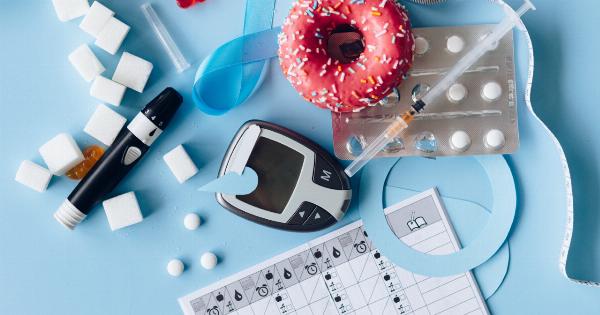Diabetes is a chronic health condition that affects millions of individuals worldwide. It occurs when your body cannot effectively process sugar, leading to high blood glucose levels. There are two types of diabetes: type 1 and type 2.
Type 1 diabetes is typically diagnosed in childhood and results from your body’s inability to produce insulin. Type 2 diabetes, which is more common, typically develops in adulthood and is caused by insulin resistance.
Unfortunately, diabetes can be a silent disease with no noticeable symptoms in the early stages. This makes it essential that you understand the risk factors associated with diabetes to take preventative measures to avoid its development.
What are the Risk Factors for Diabetes?
While genetics play a role in the development of diabetes, many additional risk factors can increase your odds of developing the disease. Below are the most commonly identified risk factors for diabetes:.
1. Obesity or Overweight
One of the most significant risk factors for type 2 diabetes is obesity or being overweight. The more fat you have in your body, the more resistant your cells become to insulin.
This resistance leads to increased glucose in the bloodstream, causing diabetes development.
2. Sedentary Lifestyle
Leading a sedentary lifestyle without ample physical activity can also increase your risk of developing diabetes.
Regular exercise helps in maintaining a healthy body weight, lowering blood sugar and fat levels, reducing inflammation, and generally improving blood flow.
3. Age
The older you get, the more at risk you are of developing type 2 diabetes. Diabetes can develop at any age, but it is more common in individuals over the age of 45.
4. High Blood Pressure
High blood pressure or hypertension is another risk factor for developing diabetes. It increases the pressure of the blood flowing through your veins and arteries, stressing your cardiovascular system.
This can lead to damage to the small blood vessels, impeding blood flow to the pancreas, which results in an increased risk of diabetes.
5. Family History
If you have a close family member like a parent or sibling with diabetes, your likelihood of developing the disease is increased significantly.
You should be more cautious and ensure that you maintain an ideal body weight, exercise regularly, and monitor your blood glucose levels frequently.
6. Gestational Diabetes
If you had gestational diabetes while pregnant, you are more at risk of developing type 2 diabetes. You should adopt healthy lifestyle choices to reduce your chances of its development.
7. Polycystic Ovary Syndrome (PCOS)
PCOS is a condition that affects women. They have increased levels of male hormones, leading to excess body hair growth, irregular periods, and infertility. PCOS also increases a woman’s risk of developing diabetes.
8. Sleep Disorders
Individuals with sleep disorders like sleep apnea, where breathing is interrupted during sleep, can significantly increase their risk of developing type 2 diabetes.
Sleep disorders can reduce the body’s insulin sensitivity, which causes an increase in blood sugar levels.
9. Ethnicity
Individuals from certain ethnicities are more at risk of developing diabetes than others. For instance, Native Americans, African Americans, Hispanics, and Asians are more susceptible to developing type 2 diabetes than Caucasians.
10. Unhealthy Diet
Lastly, eating an unhealthy diet can significantly increase your chances of developing type 2 diabetes.
A diet high in saturated fats, sugars, and processed foods can lead to weight gain, insulin resistance, high blood glucose levels, and, ultimately, diabetes.
Conclusion
It is crucial that you understand the risk factors associated with diabetes and take measures to prevent its development.
You should maintain a healthy lifestyle, exercise regularly, eat a balanced and healthy diet, and monitor your blood glucose levels frequently. You are more likely to develop diabetes if you have any of the above risk factors. Even if you do not have any risk factors, it is always best to keep an eye on your blood glucose levels to ensure early identification of the disease.




























